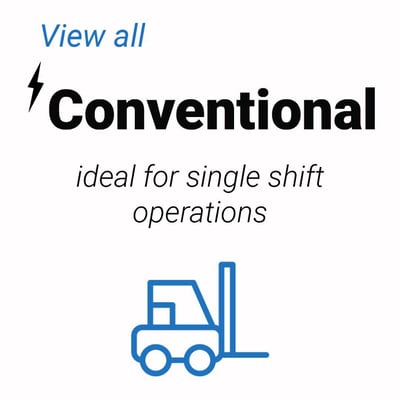
Forklift Batteries Safety Protocols
In the bustling world of warehousing and logistics, the smooth operation of heavy machinery is paramount. Among these machines, forklifts play a critical role in transporting goods efficiently. However, they rely heavily on batteries to function effectively. Understanding and implementing Forklift Batteries Safety Protocols is not just advisable; it’s essential for safeguarding workers, equipment, and inventory. In this article, we’ll delve deep into the protocols surrounding forklift batteries, exploring their importance, safety measures, and best practices.
Understanding Forklift Batteries Safety Protocols
Forklift batteries are often large lead-acid or lithium-ion units that provide the necessary power for electric forklifts. Neglecting safety protocols can lead to serious accidents, injuries, or even fatalities. Moreover, improper handling can damage expensive equipment and hinder operational efficiency. So what exactly are these safety protocols?
Why Are Forklift Battery Safety Protocols Important?
The importance of adhering to Forklift Batteries Safety Protocols cannot be overstated. Here’s why:
In short, following these protocols not only promotes a safer workplace but also enhances productivity by ensuring that machinery runs smoothly.
Key Components of Forklift Batteries Safety Protocols
When it comes to implementing effective safety protocols for forklift batteries, several 80 volt flat plate forklift batteries key components should be taken into account:
- Training Staff: Ensuring that all personnel are trained on battery handling procedures is crucial.
- Personal Protective Equipment (PPE): Workers should always wear appropriate PPE when working with or around forklift batteries.
- Proper Storage: Batteries must be stored in designated areas that are safe from environmental hazards.
- Regular Inspections: Conduct routine checks to ensure that batteries are in good condition and free from leaks.
By addressing these components, companies can create a comprehensive safety protocol tailored specifically for their operations.
Best Practices for Handling Forklift Batteries
Understanding how to handle forklift batteries safely is vital for any business relying on these machines. Here are some best practices you should consider:
1. Always Use Appropriate PPE
When working with forklift batteries, personal protective equipment (PPE) becomes your first line of defense:
- Gloves: Chemical-resistant gloves protect your hands from corrosive substances found in battery acid.
- Safety Goggles: Protect your eyes from splashes or debris when handling batteries.
- Steel-Toed Boots: These safeguard against heavy objects falling during battery installation or removal.
Wearing proper PPE reduces the risk of injury significantly.
2. Ensure Proper Ventilation
Batteries can emit harmful gases such as hydrogen during charging processes. Therefore:
- Make sure the charging area is well ventilated to prevent gas accumulation which could lead to explosions.
- Install exhaust fans if necessary to facilitate airflow in enclosed spaces.
Keeping the environment safe helps mitigate risks associated with battery use.
3. Follow Charging Protocols Carefully
Charging forklift batteries requires attention to detail:
- Never overcharge a battery; this can cause overheating and damage.
- Use chargers specifically designed for your type of battery to avoid compatibility issues.
- Regularly check charging cables for fraying or damage before use.
By adhering closely to charging protocols, you ensure both safety and efficiency.
forklift batteries4. Inspect Batteries Regularly
Routine inspections serve as an early warning system for potential issues:
| Inspection Criteria | Frequency | Notes | |---------------------------|--------------|-----------------------------------------| | Physical Condition 36 volt flat plate forklift batteries | Weekly | Check for cracks or leaks | | Water Levels | Monthly | Ensure electrolyte levels are adequate | | Terminal Corrosion | Monthly | Clean terminals if corrosion is present |
Regular inspections help detect problems before they escalate into dangerous situations.
5. Secure Transportation Procedures
When transporting forklift batteries:

- Use appropriate lifting techniques—always lift with your legs rather than your back.
- Ensure batteries are secured during transport; use straps if necessary.
Taking care during transportation minimizes risks of accidents effectively.
Common Risks Associated with Forklift Batteries
Despite following proper protocols, there remain inherent risks associated with forklift batteries that every operator must acknowledge:
Chemical Hazards
Forklift batteries contain sulfuric acid which poses serious health risks upon contact:
- Skin burns
- Eye damage To mitigate these hazards, always be equipped with neutralizing agents like baking soda in case of an acid spill.
Electrical Risks
Improper connections can lead to lead-acid forklift batteries short circuits or electrical shocks:
Fire Risks
Hydrogen gas emitted during charging is highly flammable:
Awareness of these common risks can significantly enhance workplace safety standards surrounding forklift battery use.
FAQs about Forklift Battery Safety Protocols
1. What types of batteries do forklifts typically use?
Most forklifts utilize either lead-acid or lithium-ion batteries due to their reliability and performance capabilities.

2. How often should I inspect my forklift's battery?
It’s recommended to conduct weekly inspections for physical condition checks and monthly inspections for water levels and terminal corrosion.
3. What should I do if there’s a leak in my forklift battery?
Immediately stop using the forklift and consult your company’s hazardous material protocol while wearing appropriate PPE before attempting clean-up procedures.
4. Can I charge a forklift battery indoors?
Yes, provided the area is well ventilated to prevent hydrogen gas accumulation which could pose explosion risks.
5. Is training mandatory for personnel handling forklift batteries?
Absolutely! Training ensures workers understand potential hazards and proper handling techniques which minimizes risks significantly.
6. Should I wear gloves when dealing with forklift batteries?
Yes! Wearing chemical-resistant gloves protects against corrosive substances found within the battery casing.
Conclusion
As we’ve explored throughout this article on Forklift Batteries Safety Protocols, prioritizing safety cannot be stressed enough when it comes to managing heavy machinery like forklifts powered by large-scale batteries. By following established guidelines—from using appropriate PPE and ensuring adequate ventilation during charging processes—to conducting regular inspections and being aware of potential hazards—you can foster a safe working environment that not only protects employees but also maintains operational integrity within your facility.
Implementing robust safety measures will pay dividends in reducing workplace incidents while enhancing overall productivity—after all, when it comes down to it, isn’t everyone’s goal simply getting the job done safely?